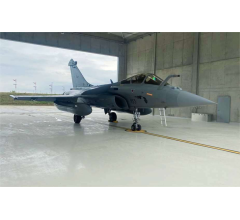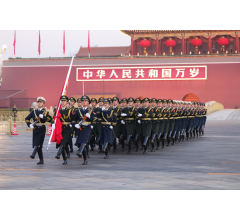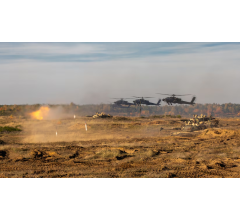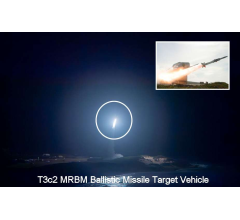The Latest Headlines at Defense World


US and Russia Share Tarmac: Tensions Rise as Troops Converge on Niger Airbase
Key Points: US forces are withdrawing from Airbase 101 in Niger following a directive from the country’s military leadership. Russian military personnel have arrived at the same airbase, raising concerns about shifting... More of this article »
Shifting Sands: US-Saudi Defense Pact Aims to Restructure Middle East Dynamics
Key Points: The US and Saudi Arabia are nearing a defense pact that could reshape Middle East geopolitics. The agreement may lead to the normalization of relations between Saudi Arabia and Israel, contingent upon progress towards... More of this article »
French Military to Acquire Strategic Assets from Ailing IT Giant
Key Points: The French government will acquire the strategic assets of Atos, a struggling IT firm, to protect national security and technological independence. Atos plays a critical role in France’s defense infrastructure,... More of this article »
Croatia Bolsters Air Defense with French Fighter Jets
Key Points: Croatia received the first six of twelve Dassault Rafale F3R fighter jets, which significantly upgraded its air force capabilities. The acquisition of the Rafales signifies Croatia’s commitment to modernizing... More of this article »
US Aid Ignites Tensions Between China and Taiwan
US Military Aid to Taiwan Stokes Cross-Strait Tensions Key Points: The US has approved an $8 billion military aid package for Taiwan, sparking strong condemnation from China. Taiwan welcomes the aid, viewing it as crucial... More of this article »
Hidden Agendas: Billions Added to Pentagon Budget Without Explanation
Key Points: Over $21 billion has been added to the Pentagon’s budget through over 1,000 individual program increases inserted by lawmakers. These programs lack transparency, raising concerns about potential conflicts... More of this article »
Navy Wants One Submarine, Lawmakers Push for Two
Key Points: The US Navy has requested funding for one Virginia-class submarine in fiscal 2025, while lawmakers are pushing for two. Lawmakers argue that reduced submarine orders will harm healthy vendors within the submarine-industrial... More of this article »
First Defense Talks in 18 Months: US, China Seek to Manage Competition
Key Points: U.S. Defense Secretary Lloyd Austin and Chinese Defense Minister Adm. Dong Jun spoke for the first time in 18 months, marking a thaw in military communications. The talks centered on managing tensions, emphasizing... More of this article »
Netherlands Allocates Significant Military Aid for Ukraine
Key Points: The Netherlands firmly supports Ukraine’s defense, committing €4 billion in military aid over 2024-2026 and increasing its defense budget. The Netherlands prioritizes replenishing air defense and ammunition... More of this article »
Brazil Seeks Modern Maritime Patrol Fleet
Brazil’s Air Force (FAB) is taking significant steps to modernize its maritime patrol capabilities, a mission vital to protecting its vast coastline and offshore resources. The FAB is collaborating with the nation’s flagship... More of this article »
Record-High Military Sales for the United States
Key Points Russia’s assault on Ukraine has spurred a significant arms procurement surge worldwide, with the United States benefiting from increased sales and a strengthening of defense partnerships. European nations,... More of this article »
Microchips and Missiles: Russian Defense Contractor Violates Sanctions
The global effort to isolate Russia economically continues to face determined opposition within Russia itself. In a striking case of sanctions evasion, a prominent Russian microchip manufacturer has been caught red-handed supplying... More of this article »
Norway to Sharply Increase Defense Spending
In a move signaling a significant shift in national priorities, Norway’s government has announced a historic increase in defense spending. This surge in investment aims to modernize the nation’s armed forces and bolster its... More of this article »
